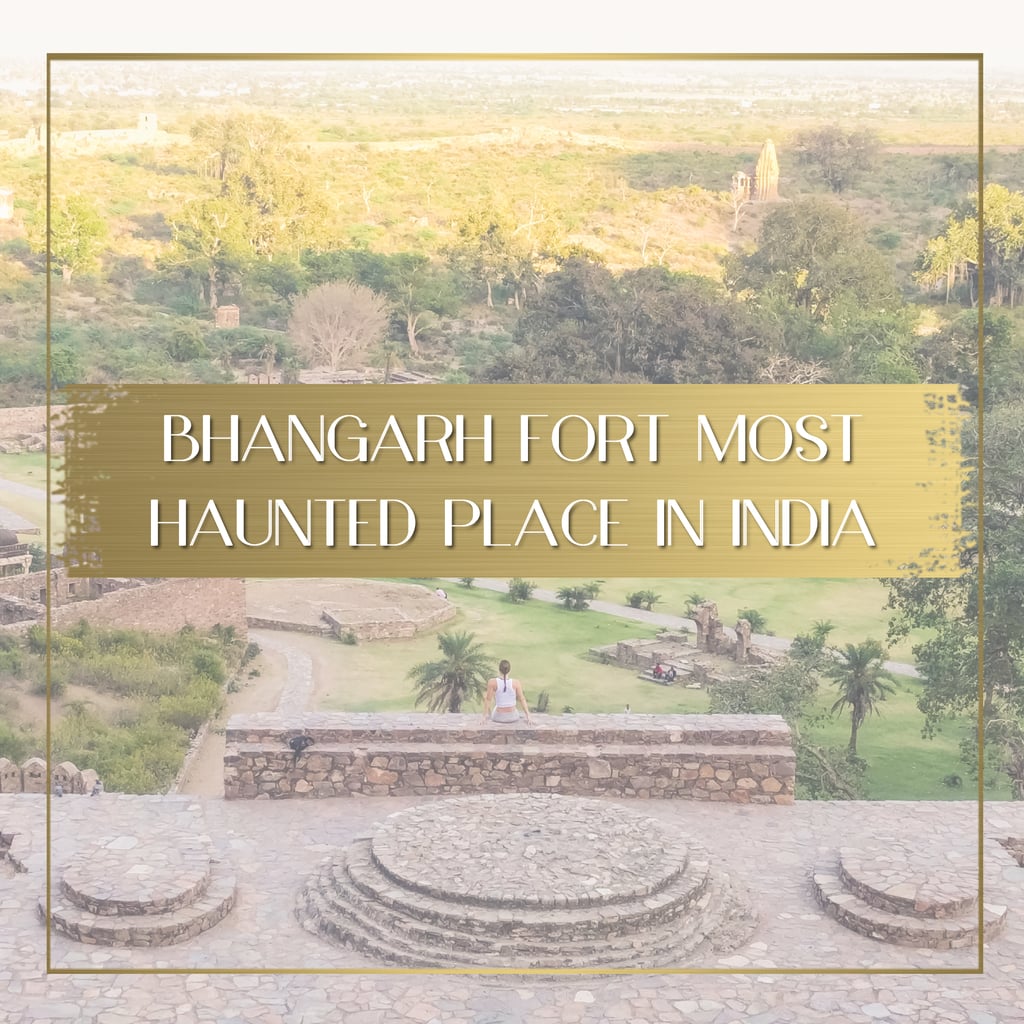
Touted by The Times of India as the country’s “most haunted place”, my friend Vera and I visited Bhangarh Fort with a mixed feeling of incredulity and curiosity. It would have made such a great story if we had indeed encountered paranormal activity.
We approached Bhangarh on an open top jeep, safari–style, from the luxury of Amanbagh, a mere half an hour drive away through the local Rajasthani villages a couple of hours away from royal Jaipur.
The day is hot, dry and sunny, with the light being appeased by the sunset. We have booked a private sunset yoga class on the fort’s premises just before the sun goes down, despite the The Archeological Survey of India having marked the area as not safe between sunset and sunrise and the locals know better than to stay past daylight. By the time our yoga session ends the fort is completely empty, locals and visitors alike driven away by the fear of ghost sightings.
Bhangarh was the capital of Rajasthan in Medieval times before it was obliterated overnight by the powers of black magic. Legend holds that the king of Bhangarh had hired a court magician, Selu Sewra, to send spells against his enemies in an effort to keep the city of 100,000 at the time safe from invaders.
But the magician turned against him when he fell in love with the Queen and tried to win her affection and love through a spell hidden in a perfume bottle her maid was sent to collect. Angry that the King tried to stop him and the spell didn’t work, the magician decided to destroy the village in one night by raining rocks on it. The King managed to warn the villagers but many did not believe him and decided to stay only to perish under the fallen rocks.
The city was built in the second half of the 16th century by Diwan Madho Singh, brother of Maharaja Man Singh, Akbar the Great’s general and it had several temples, some of which are still standing today. There were gardens, pools, lakes, bazaars and a magnificent fort that can still be climbed.
Locals inhabited the area until the 1700s when they finally moved the village further away for fear of ghosts. The belief in superhuman powers is so strong that even the government has decided to ban access to the area during dark.
Today, little from its past grandeur stands. When you walk in through a rocky path, a large, intricately knitted banyan tree greets you before the main entrance. Inside, it is particularly peaceful, despite being one of the most famous sites in India, known to the locals for its ghostly appearances and paranormal activity.
The truth is that its cache and popularity have not attracted tourism in proportion, perhaps due to fear. The ruins stand half destroyed half perfectly preserved. The main avenue where the market used to be located, has a cobblestoned pavement fringed with half standing buildings that used to house merchant’s dwellings and goods for sale. At the end of the street there is a gate to the main fort area.
Green grass provides comfortable seating under the shade of lush trees. Chipmunks parade their goodies caught from visitors’ snacks or from rice offered to the Gods. One temple stands practically untouched by the tragedy.
The sun is starting to set behind the mountains that the Royal Palace is located against and the last rays of sun from the day will soon slip behind the tall peaks bringing shadows and the underworld back to life. I look to the right and see Ganesh Temple, standing tall as if nothing had happened around it. Destruction brought chaos and flattened out the entire area but there it stands, undaunted by the black magic spell or the looting and attacks.
Up at the base of the hill the Royal Palace can be explored, or at least what is left of it. From the rooftop, the views over the plains are magnificent and the true extent of the ancient city obvious. Bhangarh might have been the center of the world in the 1500s but it is now the center of much fear and legend.
We started our yoga class on the platform of one of the temples farther away from the main ruins. The air was clean if a little dusty, and the yoga mats were placed with views over the plains. Ants danced between my fingers as I relaxed in downward facing dog pose.
When the class ended and I finally opened my eyes from the last resting pose I realised we were completely alone and the sun had long before disappeared under the horizon. As we walked through the vegetation and out from the fort we did not sense, feel, hear or see any ghosts. Perhaps we should have stayed for dinner and played hide and seek with the Queen or the Magician.
